By Sean Moloughney, Editor, Nutraceuticals World03.01.19
For the second consecutive year, staff from Contract Pharma and Nutraceuticals World solicited feedback from subscribers to understand basic perceptions about the contract manufacturing market.
We received responses from 223 qualified individuals who provided responses to a short online questionnaire. Based on responses and feedback, it’s clear that working with a contract manufacturer affords companies flexibility to focus on other business and operational priorities. Results are presented via a series of graphs on the following pages. Here are some highlights:
About 37% of respondents said they have been working with their current contract manufacturing partner for 1-5 years, while 26% said the relationship has been more than 10 years.
A lack of resources/expertise continues to be the most cited factor in deciding to outsource manufacturing (38%), followed by cost savings (28%), and the ability to focus on other business priorities (25%).
About two-thirds (67%) said they conducted an onsite inspection of their contract manufacturer’s facilities within the last year, 16% within the last 5 years; meanwhile, 13% said they have never inspected their manufacturer’s facility.
Overall, quality certifications was the most important factor respondents cited when deciding which contractor manufacturer to partner with (42%).
When asked to explain how working with a contract manufacturer improved or affected their business, the vast majority of open-ended responses were positive. Respondents often cited flexibility and efficiency, along with cost savings and better resource management. Here are a few of the anonymous responses in their own words:
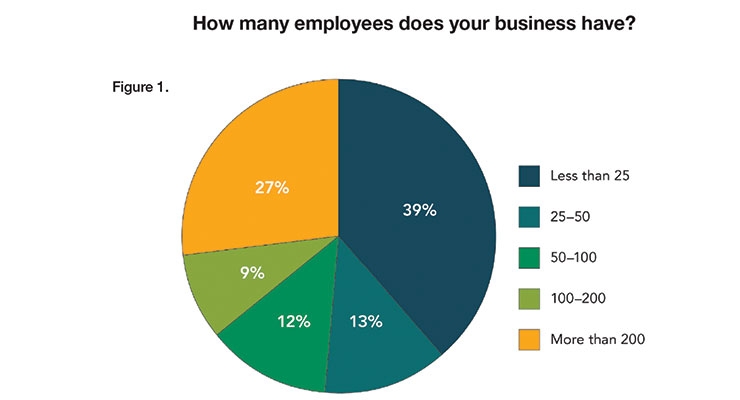
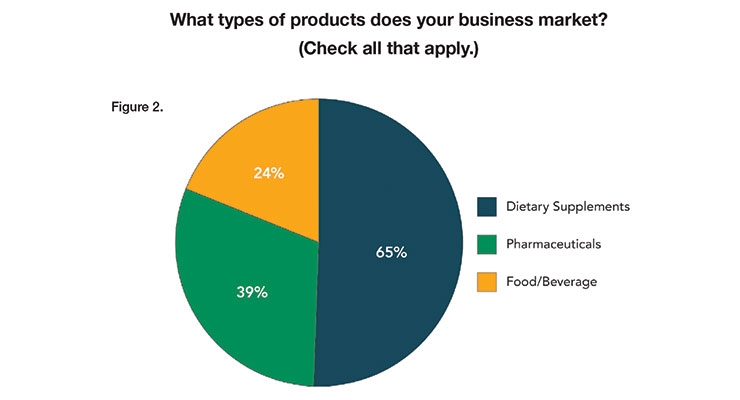
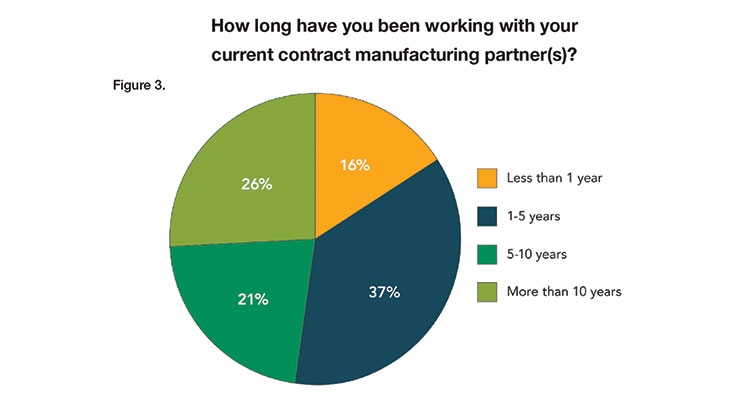
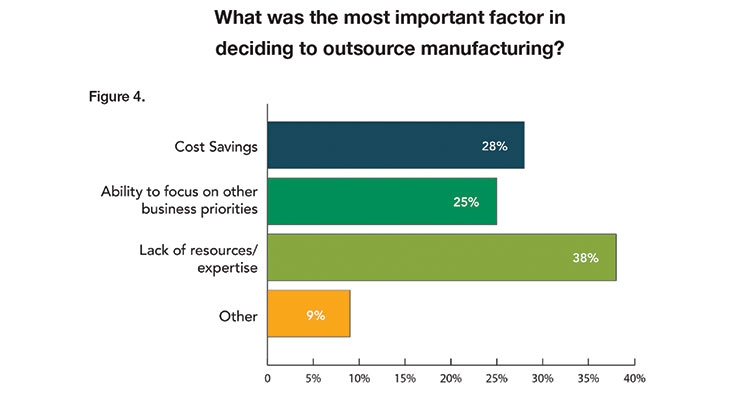
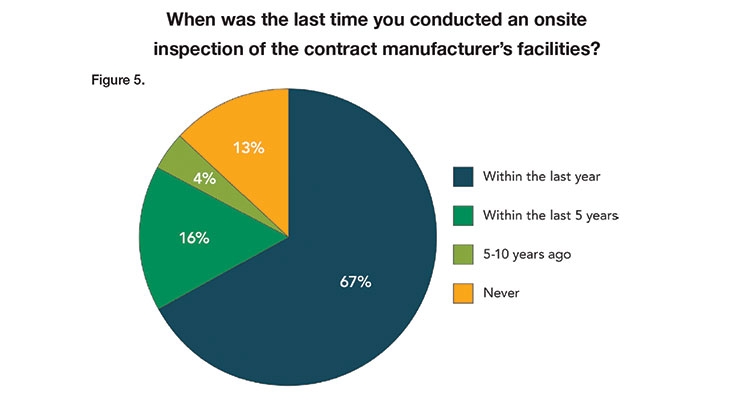
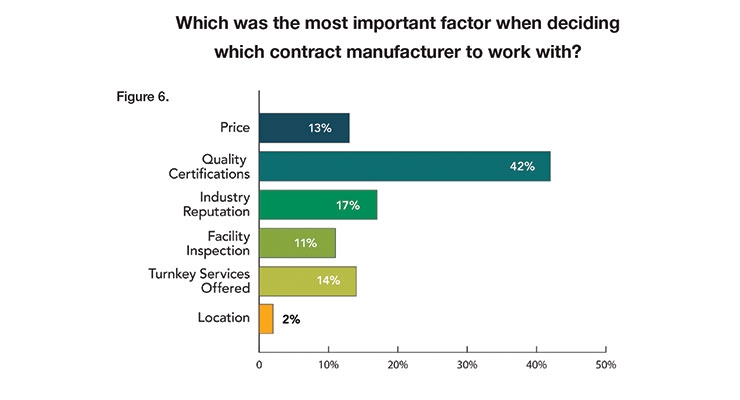
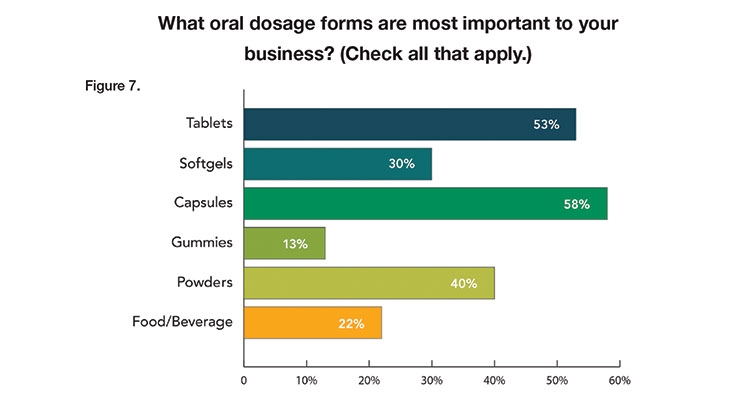
We received responses from 223 qualified individuals who provided responses to a short online questionnaire. Based on responses and feedback, it’s clear that working with a contract manufacturer affords companies flexibility to focus on other business and operational priorities. Results are presented via a series of graphs on the following pages. Here are some highlights:
About 37% of respondents said they have been working with their current contract manufacturing partner for 1-5 years, while 26% said the relationship has been more than 10 years.
A lack of resources/expertise continues to be the most cited factor in deciding to outsource manufacturing (38%), followed by cost savings (28%), and the ability to focus on other business priorities (25%).
About two-thirds (67%) said they conducted an onsite inspection of their contract manufacturer’s facilities within the last year, 16% within the last 5 years; meanwhile, 13% said they have never inspected their manufacturer’s facility.
Overall, quality certifications was the most important factor respondents cited when deciding which contractor manufacturer to partner with (42%).
When asked to explain how working with a contract manufacturer improved or affected their business, the vast majority of open-ended responses were positive. Respondents often cited flexibility and efficiency, along with cost savings and better resource management. Here are a few of the anonymous responses in their own words:
- “Significantly improved in the production and performance of the company because there is no need to make heavy investments to increase production.”
- “Tremendous help as we do not have the resources nor the expertise of manufacturing. Also, the CMO has innovative dosage forms which facilitate better marketing of our products.”
- “Allowed for the much more efficient use of capital and time.”
- “They have freed up our internal manufacturing to focus on higher value-added opportunities.”
- “It allows us to deploy resources to innovation, sales and marketing, and scale our business much faster.”
- “Focusing on quality contract manufacturers that are flexible and responsive have been key. We appreciate working with a large organization with significant resources but still responsive to us as a small company.”
- “It has allowed us to focus in areas of growth with marketing and sales without having to create a manufacturing environment from scratch. It has opened up additional opportunities with other product lines and is allowing us to scale up at a much faster rate.”
































